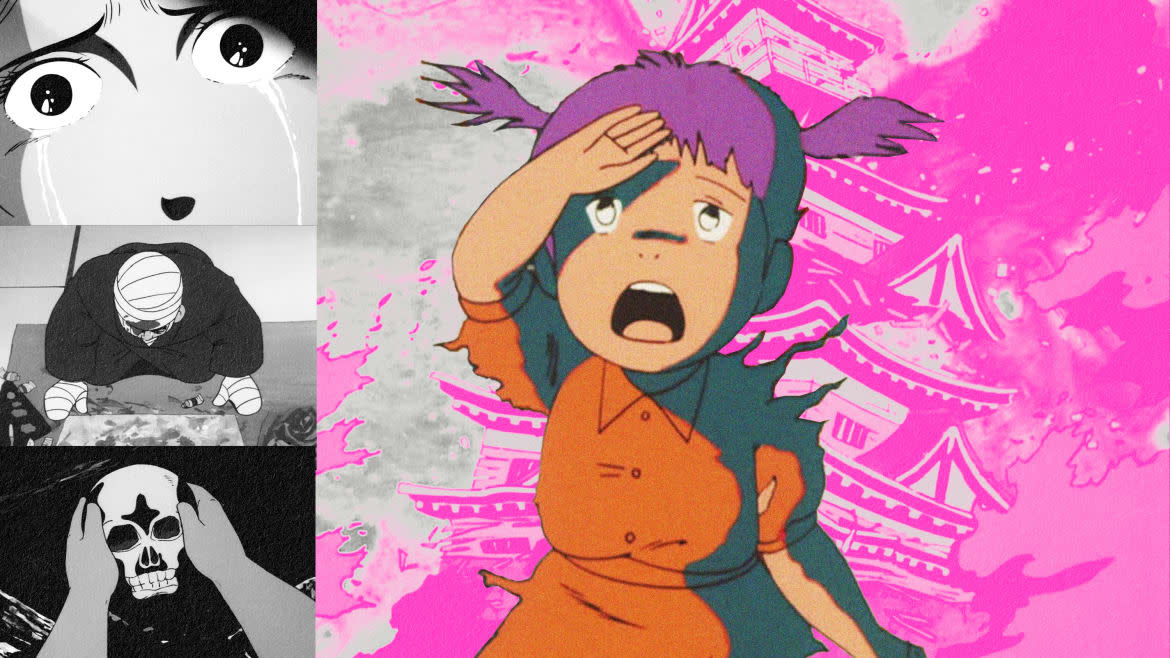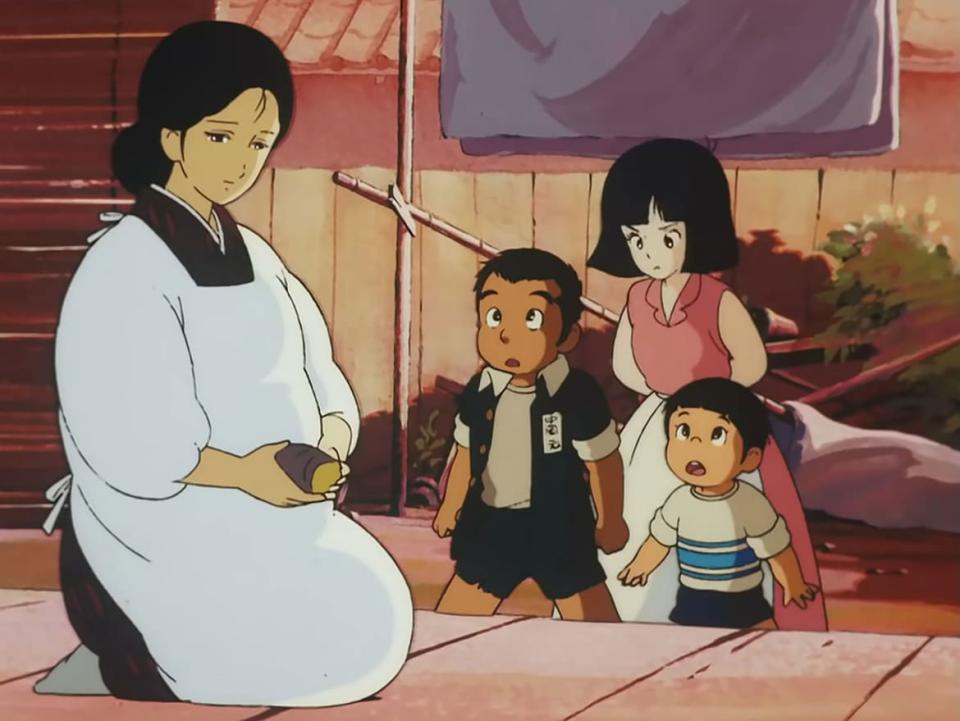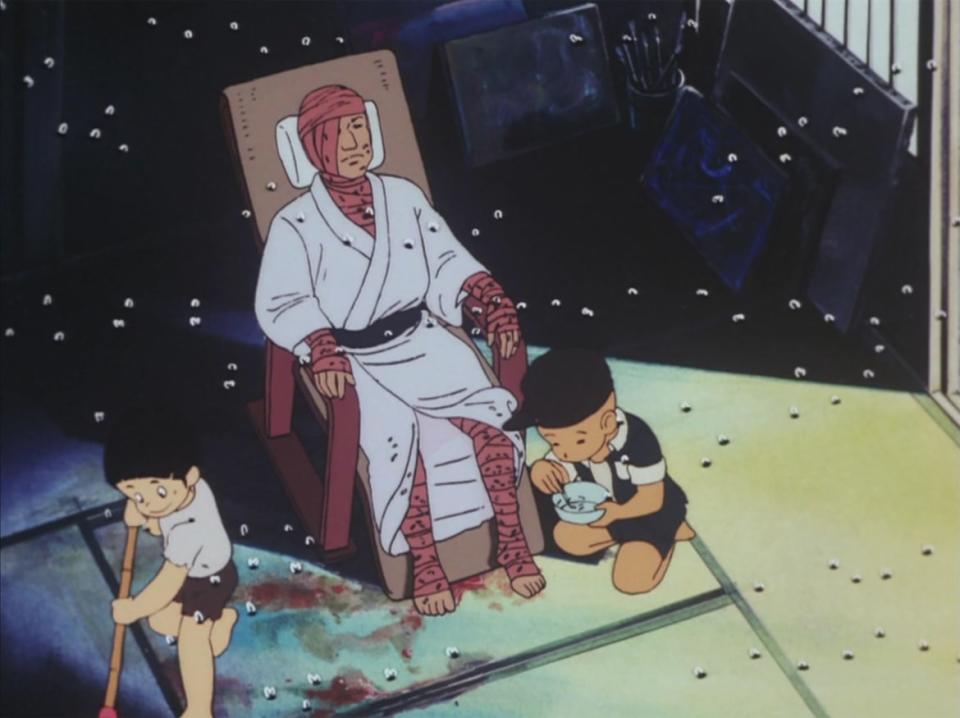‘Barefoot Gen’: The Horrifying, Must-Watch Atomic Bomb Film from the Japanese POV

- Oops!Something went wrong.Please try again later.
The world changed forever on Aug. 6, 1945. Toward the end of World War II, the US dropped an atomic bomb on the Japanese city of Hiroshima—the first time a nuclear bomb had ever been used in warfare. Three days later, America dropped a second atomic bomb on the nearby city of Nagasaki. Japan surrendered on Sept. 2, and the war finally ended.
The employment of nuclear warfare altered the fabric of society. The Cold War followed World War II, the world living in fear of possible nuclear destruction and mass genocide. Although the Cold War technically ended decades ago, with nine countries reportedly holding nuclear weapons, there is still plenty of paranoia about nuclear war breaking out. Despite the lingering threat of nukes destroying everything, for the vast majority of the world, the scale of an atomic bomb is utterly unknowable.

That’s not the case for Keiji Nakazawa, who was just 6 years old when an atomic bomb was dropped on his hometown of Hiroshima. As an adult, full-time cartoonist, Nakazawa decided to commit his unshakable memories to paper. The first volume of his manga Barefoot Gen, based on Nakazawa’s own childhood, was published in 1973. The series ran for over a decade and was adapted into three live-action and two anime films—the best of which, also called Barefoot Gen, premiered July 21, 1983. That was exactly 40 years ago this week, and exactly 40 years before the release of Oppenheimer, Christopher Nolan’s new film about the man known as “the father of the atomic bomb.”
‘Oppenheimer’ Review: Christopher Nolan’s Devastating, Explosive Magnum Opus
The film, directed by Mori Masaki and written by Nakazawa, follows along with the first half of the manga. It follows young Gen Nakaoka and his family in Hiroshima in the latter part of World War II. The ongoing war has exhausted the country, with people forming long, winding lines to secure their meager rations. Restful sleep is all but impossible, thanks to nightly air raid warnings.
Like the manga, Barefoot Gen delicately balances the joys and discoveries of childhood with the harsh reality of living through a war. When the film’s title drops, we see Gen and his younger brother Shinji joyously running through their family's wheat field, their beaming smiles reflecting an unmistakable childhood innocence. But that optimism only goes so far—the next time we see them run together (just a few minutes later), they’re racing to find a doctor to prevent their mother from dying of malnutrition.
In another scene, Gen and Shinji chase each other through the house, fighting over who gets to eat the family’s final potato. Seen through the eyes of children, it’s a charming, almost jovial scene of brothers tussling. It’s quickly interrupted by their older sister, Eiko, telling them they have to let their mother eat the potato, or the baby growing in her will die.
The Nakaoka family lives a life full of challenges, but Masaki’s film carefully observes the love this family has for each other. Closely observed details, like a quiet moment when the boys rest their heads on their mother’s lap and feel the baby kicking, are bursting with tenderness. Despite their circumstances, their love for one another cannot be extinguished.

Everything changes on Aug. 6. The film’s portrayal of what happens is haunting: There’s not a cloud in the sky on this gorgeous day. Kids head off to school, farmers tend their land, and people wait for the bus. But Kentarō Haneda’s distressing score starts to take over, getting louder and louder. Strange things start happening: ants head into homes in droves, and a B-29 plane is spotted in the air.
And then it happens. The atomic bomb explosion in Barefoot Gen is a horrific, unforgettable sequence. The score fades into complete silence. All color is drained from the scene when the bomb hits—except for a sinister red mushroom cloud that emerges from the bird’s-eye view of Hiroshima.
[Content warning for the clip below: graphic bodily harm and potentially triggering images.]
In a moment that’s staggeringly bleak, we see a young girl holding a red balloon. It pops, and the camera queasily zooms in on her. Her hair and clothes are singed off, her eyes drooping out of their sockets, as her skin melts to ash. We see the same thing happen to a postman, an elderly man, a mother and her newborn baby, and a dog. The repetition does not make it easier to digest, instead forcing you to look at just some of the countless lives that were lost in the blink of an eye. Images of destruction follow: Buildings are obliterated, families are trapped under rubble, and all you can hear is the overwhelming sound of a catastrophic explosion.
The atomic bomb explosion is handled with equal-parts artistic mastery and emotional devastation, but what follows the explosion is even more harrowing. An explosion lasts moments, but the aftermath lasts a lifetime.
After the bombing, Gen wakes up under a pile of rubble, death and destruction all around him. People walk around like zombies, skin melting, eyes falling out. “Ghosts! They’re all ghosts!” Gen says, terror filling his lungs. It’s a truly apocalyptic vision, but instead of theorizing what things might be like one day, Barefoot Gen is a startling personal account of an unspeakable tragedy. This becomes even more impactful when you remember that screenwriter Nakazawa lived through this himself—this is fiction drawn from very real life.
Gen heads home to find his brother, sister, and father trapped inside their home—with the surrounding fire, there is no way for Gen and his pregnant mother, who happened to be in the right place at the right time, to save the rest of their family. They have no choice but to leave them behind. In a moment of heartbreak, Gen vows to his father that he will protect his mother.
Barefoot Gen delivers a cavalcade of other disturbing imagery. Multiple babies try to drink their mother’s milk, unaware that they have died. Maggots crawl into the open wounds of still-living people. Deadly black rain falls from the sky. A crushing zoom-out reveals that death is literally surrounding Gen and his mother. No matter where they go, they cannot escape the horrors the bomb has wrought upon them. The effects of radiation are dealt with head-on—there is no cutting away from the after effects of the bomb on the Japanese people, nor the reality of their situation. The fact that it’s all seen through the eyes of a child is doubly devastating, while it also gives us a vital lifeline into atrocity on a scale so large the human mind can barely comprehend.
Remember ‘Manhattan’: The TV Show That Told the ‘Oppenheimer’ Story First
The story of Barefoot Gen continues after the war has ended. When a neighbor tells Gen’s mother that the war is over, she’s beside herself, screaming, “What do you mean the war’s over now?” She then kneels over the skulls of her perished family.
Despite the torrent of misery, there’s an undercurrent of optimism in the film. Gen and his mother live on, and while it seems impossible, there is a future for them after the bombing. A young boy even enters their lives who bears a striking resemblance to Shinji—in the unlikeliest of circumstances, the Nakaoka family can grow, just like the grass that begins to emerge again at the end of the film.
Barefoot Gen offers not only an apocalyptic vision of the devastating effects of the atomic bomb but it also paints a portrait of Japanese resilience and resistance in a moment when such things must have surely felt impossible. It’s challenging to sit through, and its imagery will haunt you for days, even weeks after you’ve seen it. But underneath the horror lies a potent human element, as this family lives to live in unimaginable circumstances. It’s as vital a portrait of warfare you can find, brimming with terror, resistance, and humanity.
Get the Daily Beast's biggest scoops and scandals delivered right to your inbox. Sign up now.
Stay informed and gain unlimited access to the Daily Beast's unmatched reporting. Subscribe now.

